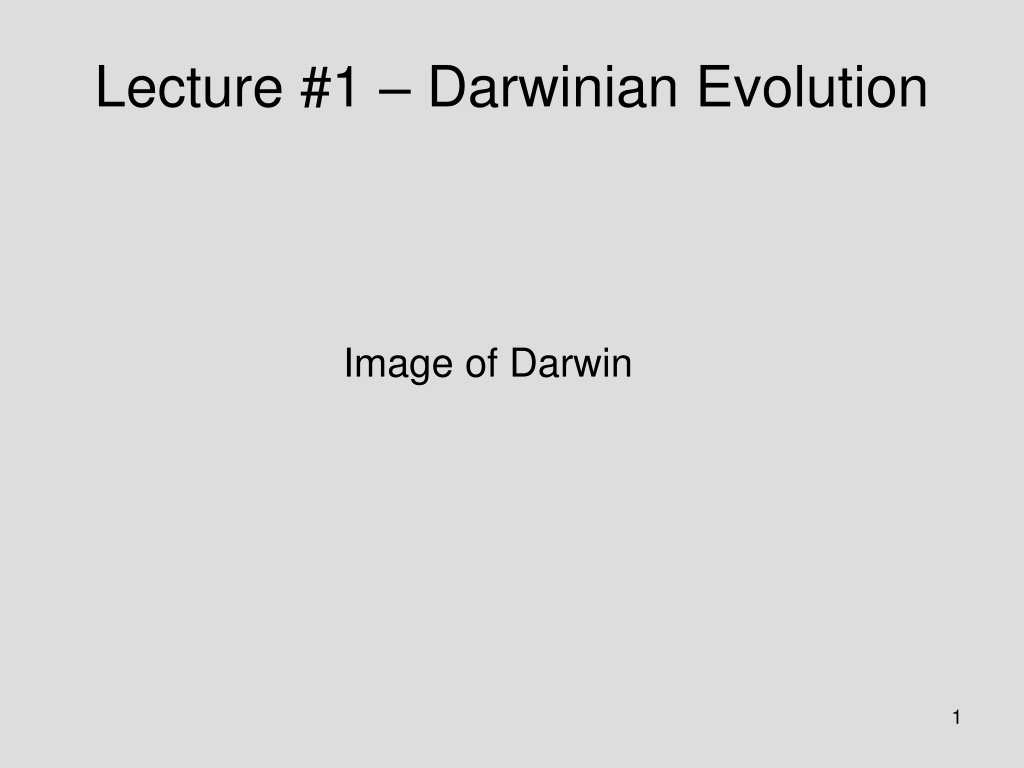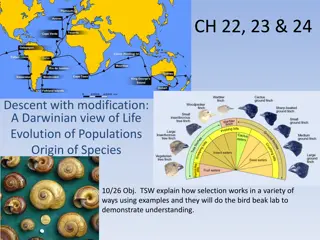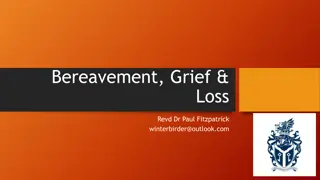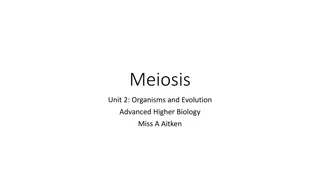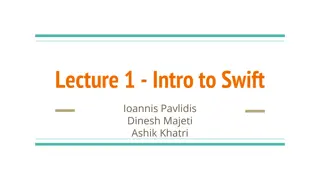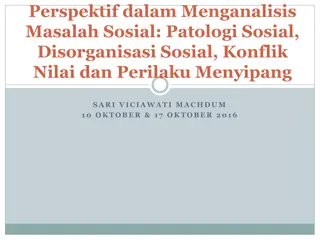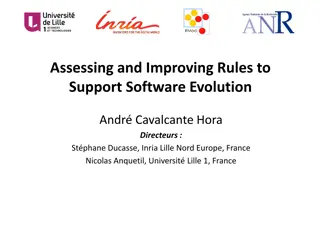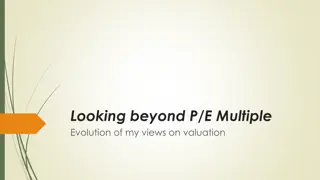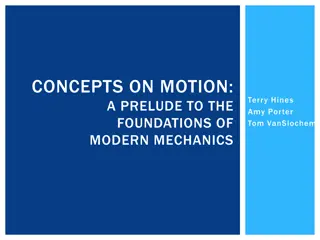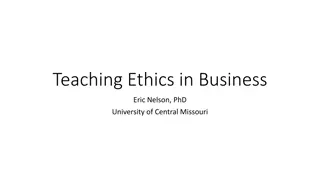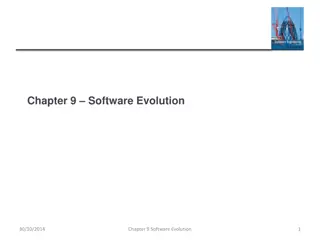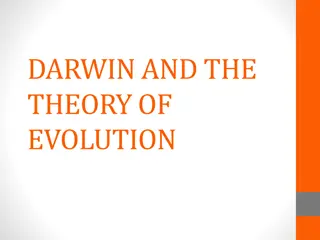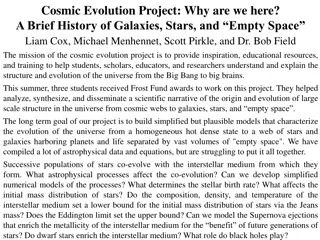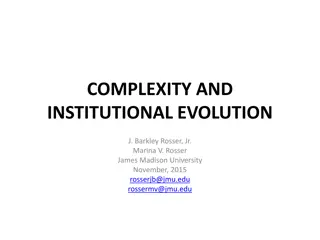Understanding Evolution: Key Concepts and Perspectives
Explore the concepts of Darwinian evolution, evidence for evolution, Darwin's theory, and the Modern Synthesis. Delve into the spiritual versus intellectual perspectives, the diversity of religious affiliations globally, and the compatibility of faith and science in understanding the natural world and moral guidance. Gain insights into species, populations, communities, and the process of evolution over time through historical evidence and observation of character displacement.
Download Presentation

Please find below an Image/Link to download the presentation.
The content on the website is provided AS IS for your information and personal use only. It may not be sold, licensed, or shared on other websites without obtaining consent from the author. Download presentation by click this link. If you encounter any issues during the download, it is possible that the publisher has removed the file from their server.
E N D
Presentation Transcript
Lecture #1 Darwinian Evolution Image of Darwin 1
Key Concepts: Evidence for evolution Darwin s theory The Modern Synthesis 2
Spiritual vs. Intellectual Different, but not necessarily in conflict The human intellectual experience The human emotional experience The Bible tells us how to go to Heaven, not how the heavens go The Bible tells us how to go to Heaven, not how the heavens go Galileo 3
Reality Check: The world s major religions and the dominant religion in the world s four most populous countries Religious Affiliation United States 82 World China India Indonesia 13 77 33 21 14 13 12 6 ~0 Christian 8 6 14 2 Muslim 2 Non- believers 50 12 2 1 73 Hindu ~0 1 3 32 Other 6 1 4 Buddhist 9 1 1 1 Jewish ~0 ~0 2 ~0 4 SOURCE National Geographic, December 2007
There are many equally valid ways to go to Heaven We rely on our religious texts for moral, emotional and spiritual guidance We rely on science and other intellectual pursuits to gain knowledge about the natural world There need be no conflict in these different There need be no conflict in these different ways of thinking and learning ways of thinking and learning 5
Some preliminary definitions Species individual organisms capable of mating and producing fertile offspring Population a group of individuals of a single species Community a group of individuals of different species Images species, population, community 6
Defining Evolution: A process of change over time Cannot deny that this occurs Evidence is overwhelming: Historical within the span of recorded human history Fossils the very long term geological record Comparative morphology and anatomy Biogeography the geographic distribution of species The unity of life 7
Historical Evidence: observed character displacement Changes in beak size recorded over about 2 decades after a natural migration event Photographs by B. Rosemary Grant/Science, 2006 Big-beaked invader Image finches on the Galapagos Resident species shifted to smaller beak size 8
All of agriculture is based on human selection events The domestication of grass ~12,000 years ago Led to the first cultural shift in human civilization Nomadic hunter-gather tribes villages based on agricultural production Other plants and animals as well . Image rice 9
Artificial Selection Brassica oleracea in all its forms Image cabbage, kale, cauliflower, broccoli, Brussels sprouts 10
Farm Animals different breeds Images different breeds of cattle and chickens 11
Cats and Dogs A great dane is the same species as a toy poodle! Images different breeds of cats and dogs 12
The development of pesticide resistance Resistance to insecticides, herbicides, antibiotics .. All natural responses to human generated changes in the environment Diagram development of pesticide resistance due to use of insecticides 13
Defining Evolution: A process of change over time Cannot deny that this occurs Evidence is overwhelming: Historical within the span of recorded human history Fossils the very long term geological record Comparative morphology and anatomy Biogeography the geographic distribution of species The unity of life 14
The fossil record extends back BILLIONS of years Images fossils of plants and fish 15
Most form in marine sediments Diagram formation of sedimentary rocks with fossils embedded 16
Fossil substrates can you think of others??? Images other fossil substrates 17
Formation of sedimentary rocks is not uniform in time or space Diagram formation of sedimentary rocks with fossils embedded 18
Critical Thinking The formation of sedimentary rocks is not uniform in time or space Why not??? 19
Critical Thinking The formation of sedimentary rocks is not uniform in time or space Why not??? 20
Formation of sedimentary rocks is highly dynamic Varies with geological activity Tectonic movements, mountain building, erosion Varies with climate Rain, wind, freeze/thaw cycles, water temperature all affect erosion and sedimentation Varies with the depositional environment Finer sediments in still water, coarser sediments with more wave action or other energy 21
The earths crust is very dynamic Diagram dynamic geological processes: tectonic movements, mountain building, erosion 22
Formation of sedimentary rocks is highly dynamic Varies with geological activity Tectonic movements, mountain building, erosion Varies with climate Rain, wind, freeze/thaw cycles, water temperature all affect erosion and sedimentation Varies with the depositional environment Finer sediments in still water, coarser sediments with more wave action or other energy 23
Climate is naturally dynamic on a geological time scale Graph of benthic carbonates analogous to climate change over the past 5 million years Benthic carbonates parallel atmospheric temperature changes 24
Critical Thinking How could water temperature affect the formation of sedimentary rocks??? 25
Critical Thinking How could water temperature affect the formation of sedimentary rocks??? 26
Formation of sedimentary rocks is highly dynamic Varies with geological activity Tectonic movements, mountain building, erosion Varies with climate Rain, wind, freeze/thaw cycles, water temperature all affect erosion and sedimentation Varies with the depositional environment Finer sediments in still water, coarser sediments with more wave action or other energy WHY??? 27
Play with the ocean In high energy environments (waves) only the heaviest sediments can settle Coastal environments produce sandstones In off-shore environments (no waves) finer sediments can settle Off-shore environments produce siltstones, slates, limestones 28
Sediment size depends on the energy level at the site of deposition Diagram of different depositional environments 29
Formation of sedimentary rocks is highly dynamic THUS sediments tend to be deposited in identifiable layers THUS organisms trapped in sediments form a time sequence The earliest organisms are in the bottom layers and the most recent organisms in the upper layers 30
The Grand Canyon a time sequence Image the Grand Canyon showing layers of sedimentary rock 31
Formation of sedimentary rocks is highly dynamic THUS sediments tend to be deposited in identifiable layers THUS organisms trapped in sediments form a time sequence The earliest organisms are in the bottom layers and the most recent organisms in the upper layers Dating these fossils reveals the history of change 32
Study the geological time scale it s the history of life on earth! The geological time scale Use a search engine to find the geological time scale 33
Of course the fossil record is incomplete! Organisms must be trapped in the right place under the right conditions a rare event Fossils must survive geological processes such as subduction, metamorphosis and erosion Fossils must be found! Have you ever found a fossil??? But what we do have is irrefutable evidence of change over time 34
Fossil Evidence Shows Progression Over Time new species . Diagram evolution of elephant lineages 35
.new traits. Diagram limbs developing from bony fins in tetrapods 36
.transitional forms. Diagram transition from bony fins to limbs 37
Defining Evolution: A process of change over time Cannot deny that this occurs Evidence is overwhelming: Historical within the span of recorded human history Fossils the very long term geological record Comparative morphology and anatomy Biogeography the geographic distribution of species The unity of life 38
Comparative morphology homologous structures are derived from a common ancestor Diagram forelimbs of various mammals showing identical bone structure with variation in bone size 39
Fish SalamanderTortoise Chicken Pig Cow Rabbit Human Stage of Development Early Diagram similarities in the embryos of a wide variety of vertebrates Later 40 Strickberger, 1996
Comparative morphology vestigial traits Structures that are physically or functionally reduced but clearly similar to functional structures in related organisms Tiny limb bones in some snakes and aquatic mammals Non-flying wings in ostriches emus, kiwis, penguins Blind eyes in cave-dwelling animals Vestigial tails in humans 42
Defining Evolution: A process of change over time Cannot deny that this occurs Evidence is overwhelming: Historical within the span of recorded human history Fossils the very long term geological record Comparative morphology and anatomy Biogeography the geographic distribution of species The unity of life 43
Biogeography Darwin observed patterns of species distribution during his voyage on the Beagle Diagram the voyage of the Beagle 44
Sloths found only in South America, even though similar habitats exist on other continents Image modern and fossil sloths 45
Marsupials almost restricted to Australia though convergent evolution has resulted in many similar eutherian mammals on other continents Diagram of marsupial and eutherian mammals showing similar forms Convergent evolution similar traits in unrelated organisms that evolved under similar selection pressures .more later 46
The Galpagos and other volcanic islands Many closely related endemic species .that are similar to those found on the closest mainland Darwin s conclusion species migrated and evolved new adaptations in their new home Diagram of Darwin s finch lineages 47
Defining Evolution: A process of change over time Cannot deny that this occurs Evidence is overwhelming: Historical within the span of recorded human history Fossils the very long term geological record Comparative morphology and anatomy Biogeography the geographic distribution of species The unity of life 48
Uniformity and Diversity: same DNA, same ATP, same amino acids, same membranes, same aerobic respiration . Image frog in the center of a bromeliad 49
Critical Thinking What is the implication of this uniformity in the basic building blocks of life, even though there are many millions of organisms both extant and extinct??? 50
